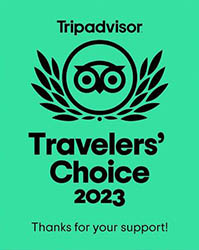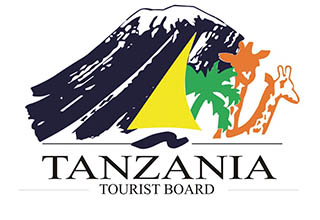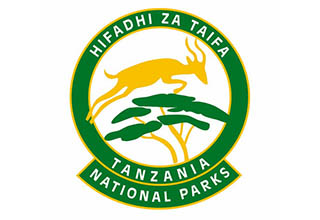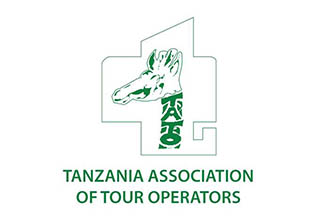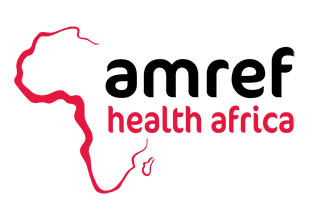Before the first day of the event
The main aims of nutritional preparation before an endurance event are:
- Glycogen storage: Storage of carbohydrates in the liver and muscles as glycogen. The glycogen is converted to glucose for energy utilisation during the event.
- To provide the body with the essential nutrients (protein, carbohydrates, fat, vitamins and minerals) as a prerequisite for optimal performance.
- A balanced pre-event meal that ensures stable blood sugar levels for the start of the day and the event.
Glycogen Storage
Glycogen storage includes the intake of a balanced diet with slightly higher carbohydrate content than usual. The protein content of the diet is also very important, as protein strengthens the muscle cells in which the glycogen will be stored. Protein is also involved with the enzymes that facilitate glycogen storage.
How much carbohydrates? 7-11g / kg body weight, i.e. ±450g for woman and ±700g for men.
When? 2-3 days prior to the event.
Fluid intake? 6-8 glasses per day (±2,7g water is required to store 1g carbohydrate)
Carbo-loading drinks? Many athletes have difficulty consuming a large amount of carbohydrates prior to an endurance event. A glycogen storage complement is a dietary system especially designed to aid in glycogen storage, by reducing the volume of the carbohydrate food required to carbo-load effectively.
The ideal glycogen storage system has the following properties:
- Low osmolality, i.e. low in glucose, fructose, sucrose and other mono- and disaccharides. Optimal absorption of fluids within the body happens when solutions are equal in terms of osmolality and what naturally occurs in the body. The storage system should therefore mainly contain a high molecular weight carbohydrate source that will facilitate rapid transit through the gastrointestinal tract ensuring rapid uptake with reduced risk of a ‘bad stomach’. As soon as the osmolality is too high it will attract water in the gastrointestinal tract and cause bloating and diarrhoea.
- High available carbohydrate content. A supplement for glycogen storage (used both in carbo-loading beforehand and directly after an event) should preferably contain carbohydrates in the range of 40-65g/serving or (±90% of total energy.
- High quality protein (5-10% of total energy). Research confirms that protein in the presence of carbohydrate enhances glycogen storage (pre- and post-exercise). As part of a refuelling product, the protein content also inhibits post-exercise muscle breakdown caused by increased cortisol secretion during exercise. Furthermore, protein nourishes the muscle and joint tissue that is crucial for endurance exercise.
- Small quantities of fat – fat delays stomach emptying and increases satiety (fat should actually only be taken in moderate amounts through the meals taken during the glycogen storage day).
| Suggested Glycogen Storage Meal plan | Carbohydrate Content (g) |
| Women should use the lower end of the range of amounts provided and men the top of the range.Please note that your normal diet should consist of high carbohydrate intakes and fibre-rich foods in order for you to not experience gastric upset after taking in the below plan. | |
| Breakfast200ml pure fruit juice ½-1 cup PVM Mealie Meal Mix (mix with water only) OR 1-2 cups cooked Traditional oats (i.e. not quick-cooking) OR 1-2 cups All Bran flakes 2 slices brown/wholegrain bread 2 tsp margarine/butter 2 eggs OR 2 medium pieces haddock (no need for this if eating PVM Mealie Meal Mix – contains protein) 1 cup full cream or low fat milk OR yoghurt 50-75g Energy Dynamics Ignite |
20 30-60 |
| 30 | |
| 12 40-61 |
|
| Snack200ml pure fruit juice 2 slices brown/wholegrain bread OR 6 whole wheat crackers (e.g. Provitas) OR 1 large bran muffin 2 tsp margarine/butter 2-3 tablespoons peanut butter OR 2-3 slices cheese 2-4 teaspoons honey/jam/syrup 40g Energy Dynamics Fusion Drink |
20 30 |
| 10-20 21 |
|
| Lunch2-4 brown bread rolls OR 2-4 slices brown/wholegrain/rye bread OR 1-2 large baked potatoes, slightly cooled 1 can tuna in brine OR 2 eggs OR ¾ cup fine biltong 2 tsp margarine/butter OR 1 tsp margarine/butter + 2 T mayonnaise 1 cup mixed salad 1 large banana OR 2 medium peaches 50-75g Energy Dynamics Ignite |
30-60 |
| 2 25 40-61 |
|
| Snack2-4 slices brown/wholegrain bread OR 3-6 whole wheat crackers (e.g. Provitas) OR 1-2 large bran muffins OR 2-4 small rusks (wholegrain) 2-3 slices cheese OR 2-3 T cottage cheese 200-400ml pure fruit juice |
25-50 |
| 20-40 | |
| Supper1-2 cups cooked pasta / rice (parboiled/Basmati) OR 1-2 large potatoes 150-200g meat/chicken/fish (fat trimmed) 2 tsp olive oil/margarine/butter (for food preparation) ½-1 cup peas OR green beans ½-1 cup carrots OR pumpkin (sugar may be added) 50-75g Energy Dynamics Ignite |
30-60 |
| 7-14 7-14 40-61 |
|
| Snack½-1 cup fresh/canned fruit salad 1-2 cups sorbet AND/OR low fat yoghurt OR milk |
10-20 12-24 |
| Total carbohydrate content | ±61 – 705 g |
Characteristics of the Breakfast at the Start of Each Hiking Day
- Should be eaten 2-3 hours before the start of the ride (if possible)
- Balanced in terms of all nutrients, i.e. carbohydrate, protein and fat
- Contain low to moderate glycemic index (GI) carbohydrates
- Low in fibre
- Contain moderate protein
- Contain moderate fat
- Should be tested on training sessions
Suggested Breakfast
Before the start of the day’s session
Breakfast, as provided according to menu (preferably whole-wheat/rye bread/seed-loaf/oats as starch)
OR
1 – 1½ cups PVM Mealie Meal Mix (mix with hot/cold water only)
Coffee/tea (milk and 1-2 tsp. sugar)
Start consuming Octane during the hour before starting the session
During The Day’s Session
During physical exertion it is crucial to replenish fluids for optimal hydration and energy essential for the brain and muscles to continue their work. Research indicates that sports drinks containing electrolytes and vitamins are significantly better absorbed than water. Water provides fluid replacement but not energy, electrolytes, vitamins and other nutrients essential for performance.
Suggested Intake
Per active hour (including training sessions > 60 min)
± 500-850ml OCTANE (50 g makes 500ml). Consume 2-3 sips at 15-20 minute intervals.
OR 1 OCATANE GEL (35g) + 250ml water every ±30 minutes
OR 500ml OCTANE (25 g in 500ml) + 1 OCTANE GEL (35g) per hour.
Prepare 25g/50g OCTANE powder sachets prior to the event in order to minimize packing volume/weight. Please note that the first option (Octane powder sachets alone) is recommended if you want to take the most energy dense source for bag weight purposes.
The following bars/drinks can be combined with Octane (if something solid or a meal is required):
- ZONE BAR (40:30:30)(protein bar): For slower, sustained energy release during the event. Consume 1 bar over a period of 1-2 hours, taking a bite every 15-20 minutes. Consume more or less 250ml water with each bar and cut back on Octane intake when using this. PVM Energy Bars can also be used in this way, although the Zone Bar is a better option for the hiker due to its protein content
- If you experience difficulty eating while moving, the FUSION/ZONE DRINK (55:22:23) can be used as a meal replacement, alternative to the bars. These drinks can be used every 3-6 hours
- TURBO BAR (68:20:12): For quicker energy release with blood sugar control during higher intensity phases e.g. when fatigue sets in during the latter stages of the event. Consume a few bites at intervals of 15-20 minutes. The intake of 1 bar should be accompanied by more or less 250ml water
- You may experience that you want to take in something else than just bars/sweet drinks (which is actually preferable at meal times). In this case you can incorporate food like biltong, dry wors, nuts, dried fruit, salt crackers, cream crackers, Melrose cheese squares, light high-energy muesli bars, etc. – plan as much of these bites you can fit into your bag! Try not to overdo it with the dried fruit, nuts, and muesli bars, though – they assist in avoiding constipation, but you do not want them to have the opposite effect (i.e. laxative effect)! Hot water with 1 tsp Marmite/Bovril can also be taken every now and again if severely cold and you do not feel like drinking Octane (although this alternative only contains some electrolytes, which is not sufficient for long periods, of course)
- The rest of the food intake should comprise of the meals, as provided
After The Day’s Session
The day’s session is not finished until you have replenished sufficiently. This will also be part of your preparation for the next day’s session. To prevent or minimise serious injuries and stiffness and to minimise post-event catabolism (muscle breakdown) and aid recovery, you need to nourish the body with not only carbohydrates but also a sufficient amount of protein.
Suggested Post-event Replenishment
Within 20-30 minutes after every day’s session OR early in the evening (if not planning to stop for sleep).
OPTION A – RECOMMENDED!
1 portion Ignite to replenish glycogen stores
OPTION B
½-1 cup Jelly Babies + ½ cup biltong + 500ml water (if not feeling up to sweet drinks at this stage)
Supper, as provided, should be taken (including starch, protein and fat)
1-2 hours before bedtime OR late at night (if not planning to stop for sleep)
1 portion Protein Blast
Vitamins and minerals
- Your preparation eating plan should include all the essential vitamins and minerals
- Vitamins are mainly involved in the energy process and immune system maintenance
- Minerals play an important role in overall health, muscle contraction and various reactions of metabolism
Recommendations for Additional Supplementation
- SELENIUM 100 microgram (m g) per day
- VITAMIN E 500 International Units (I.U.) per day
- RECOMMENDED PRODUCT: Vita Force (the contents of the capsule should be translucent and light-coloured, otherwise it has already been oxidised)
- VITAMIN C 500 milligram (mg) per day. May be increased to 1000mg during times of illness
- RECOMMENDED PRODUCT: Ascorbic Acid ZINC 20mg per day. May be increased to 40mg as described for Vitamin C RECOMMENDED PRODUCT: Vital / Weetol “Zinc Plus C”
Guidelines to Consume Adequate Amounts of Vitamins and Minerals
- Eat a yellow fruit every day (peach, mango, papaya)
- Eat a yellow vegetable every day (carrots, pumpkin)
- Eat a green vegetable every day (spinach, broccoli, green beans, cabbage)
- Eat two to three fresh fruit every day
- Eat a variety of food types, the more colourful your plate, the higher the vitamin and mineral content
- Unrefined products have a higher vitamin and mineral content than refined foods, replace white bread for brown or whole wheat bread
- If possible eat fruit and vegetable with the skin – the skin contains plenty of vitamins and minerals. Rather boil vegetables with the skin as the skin prevents loss of vitamins and minerals into the water
- Rather eat raw fruit and vegetables than cooked ones
Possible Nutritional Problems and Prevention Strategies
Dehydration The ability to sustain physical activity requires replacement of fluid losses to prevent dehydration and hyperthermia. Fluid ingestion during prolonged exercise should firstly supply sufficient water to replace losses incurred by excessive sweating, and secondly provide an energy source to supplement the body’s limited stores. A number of factors determine effective water absorption, including carbohydrate content, sodium content and total osmolality of the drink. Extensive research shows that water is absorbed more efficiently from a sports drink with the correct osmolality and carbohydrate concentration than from clean water. It is therefore important to use a scientifically formulated sports drink such as OCTANE rather than plain water – not only for its effective water absorption but also for its energy contribution.
Osmolality is a measure of the number of particles of solute in a solution per mass of solvent, i.e. the particles in the solution.
Water absorption is achieved by osmotic gradients; the water is free to move in either direction across the intestinal wall. Solutions containing a high concentration of particles (hypertonic) stimulate water secretion into the gastro-intestinal tract, which accentuates dehydration. Hypotonic and isotonic solutions are therefore preferred as they stimulate water absorption into the blood and thus into the body cells.
Guidelines to Prevent Dehydration
- Use an isotonic or hypotonic OCTANE solution, i.e. 50g (3 slightly heaped scoops) in 500ml water OR 600ml water for a hypotonic solution. For the 75g sachets that is 750ml water for isotonic and 900ml water for hypotonic solution.
- Before you start hiking: try to consume at least 500ml OCTANE – take a few sips every 15-20 minutes while packing up etc.
- During hiking and climbing: 500-900ml OCTANE per hour of hiking / climbing.
- Drink at intervals of 20-30 minutes – STOP every 30 minutes and take 4-6 sips (± 200ml) OCTANE.
- Drink even if you are not thirsty; the first sign of dehydration is absence of thirst.
- Encourage your team mates to drink up.
- Within 10 minutes after the day’s hiking / climbing: 500ml OCTANE – this intake helps to replace excessive fluid losses, restore glycogen (carbohydrate) stores and aids in recovery.
- Be careful not to over hydrate, especially if the weather is cool. Drink according to your sweat loss. This is different in every person and should be determined before going on the expedition. Determine your sweat rate by weighing yourself before and after training (do not consume any fluid during this training session); each kilogram lost is roughly equal to a litre of fluid that must be replaced.
- Thirst is not a good indicator of how much fluid you need; the appearance of urine is a better indicator
- Straw coloured urine indicates good hydration.
- Dark yellow urine indicates that you are in urgent need of more fluids (remember B vitamins also tend to colour urine very deep yellow).
- Why not only water? Drinking plain water can result in a rapid fall in plasma sodium concentration that can reduce the feeling of thirst and stimulate urine output, both of which delay rehydration or accentuate dehydration. Adding the electrolytes sodium potassium, and chloride (as found in OCTANE) lowers the amount of urine produced and restores the thirst sensors, thus helping to restore the fluid balance – these electrolytes are actively involved in the absorption process of water into the blood stream, without them the water will eventually stay in the stomach or intestine. Secondly, sports drinks contain energy, thus it is also FUEL for the brain.
Low blood sugar (hypoglycaemia) One of the major causes of fatigue during prolonged exercise is the depletion of energy stores, especially muscle glycogen (carbohydrate store).
Glucose is the main energy source for brain and muscle whereas fat is the main energy source for the heart muscle. The heart is the most important muscle during exercise as it is responsible for pumping blood to muscle and supplying the skeletal muscle with nutrients and oxygen.
Symptoms of low blood sugar include headache, nausea, vomiting, dizziness, disorientation.
Guidelines to prevent low blood sugar
- Regular intake of balanced meals and snacks, i.e. carbohydrate, protein and fat at each meal – High carbohydrate meals stimulate insulin which may lead to a low blood sugar soon after the intake of the meal
- The presence of protein and fat slows down the digestion process and stomach emptying thus resulting in a gradual rise and fall of blood sugar over a longer period after the meal
All meals and snacks should include a small protein portion, i.e. cheese, egg, milk, yoghurt, fish, meat, chicken etc.

